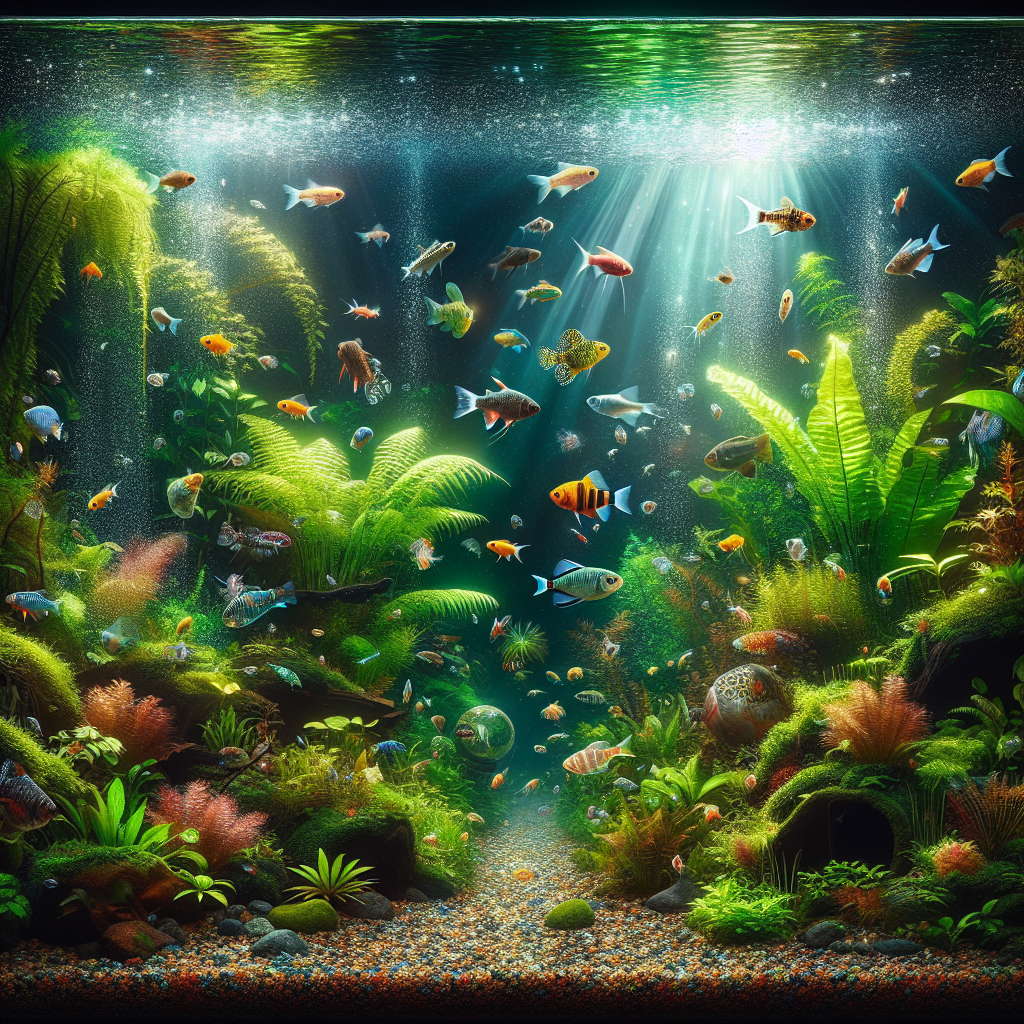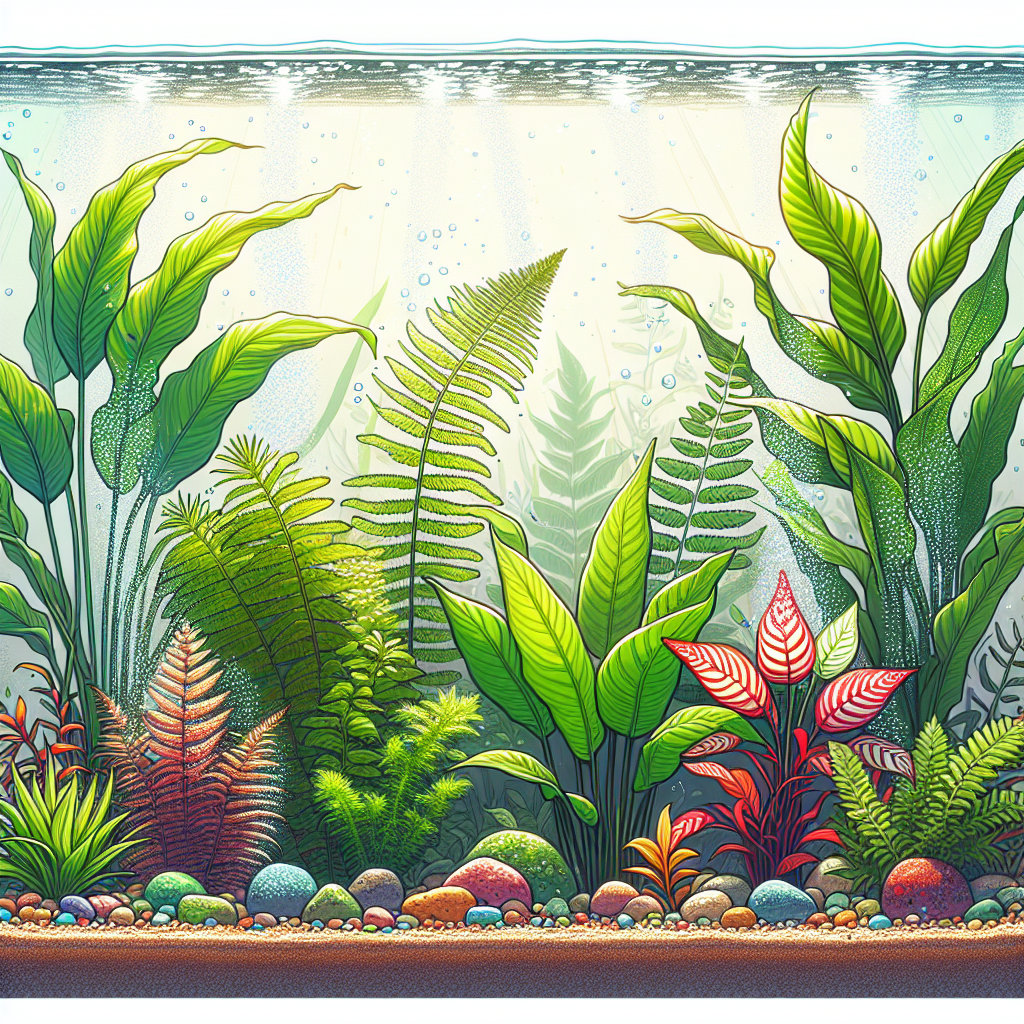Underwater Realms Explored
Imagine exploring a world where colorful creatures glide through crystal-clear waters, where coral kingdoms rise from the ocean floor, and mystical plants sway with the currents. Aquariums provide us with a window into these underwater realms, and understanding ecosystems and habitats is key to recreating and preserving the beauty of aquatic life.
Mimicking Natural Habitats
To successfully keep an aquarium, one must consider the natural habitats of the fish and plants within it. Tropical freshwater ecosystems, marine reefs, and cold-water streams are some of the diverse habitats that can be simulated in an aquarium, each with its unique set of conditions and inhabitants.
Tropical Freshwater Ecosystems
These vibrant ecosystems are teeming with life. Heavily vegetated with plants like the Amazon Sword and the Java Fern, they provide ample hiding spots for small fish. The warm waters of the Amazon or Congo river basins are replicated here, with colorful fish like Tetras, Angelfish, and Discus as the stars.

Marine Reef Systems
Famed for their complexity and beauty, marine reefs are a challenge to maintain but incredibly rewarding. Replicating the natural ecosystems found in the coral reefs requires careful attention to water quality, lighting, and flow. In a well-established marine reef aquarium, one might see Clownfish weaving through the tentacles of anemones, regal Tangs grazing on algae, or delicate corals blooming in a kaleidoscope of colors.
Cold-Water Streams
Not all aquarium inhabitants prefer a tropical climate. Cold water setups are perfect for fish like Goldfish, Koi, and certain species of Barbs. These habitats often include fast-flowing water and river stones, imitating temperate or sub-tropical stream environments where these fish thrive.
Setting the Scene
Whether you're inspired by the quiet mystery of a mountain stream or the bustling life of a coral reef, selecting the proper substrate, decor, and plants will set the scene for your aquarium. These elements not only make your tank visually appealing but also contribute to the health and well-being of your fish by providing shelter and mimicking natural processes.
Balancing the Ecosystem
Keeping a healthy aquatic habitat isn't just about looks; it's a delicate balance of biological, chemical, and physical processes. Biological filtration is essential, with beneficial bacteria breaking down waste products. Chemical filtration removes harmful substances, and physical filtration keeps the water clear.
Unseen Water Parameters
Certain unseen parameters within the water can make or break your aquarium. Parameters like pH, ammonia, nitrite, and nitrate levels are crucial to the health of the fish and plants. Employing testing kits regularly and understanding the results are key to proactive aquarium management.
Aquarium Plant Care
Aquatic plants not only beautify an aquarium but also play a critical role in the ecosystem. They oxygenate the water, absorb carbon dioxide, and provide habitats for smaller creatures and fish. Some popular choices for aquarium plants include Anubias, Water Wisteria, and Hornwort. They require varying levels of light and nutrients, much like their terrestrial counterparts.

Community and Coexistence
One of the joys of aquascaping is creating a community where fish of different species coexist harmoniously. Understanding the social behavior and environmental needs of each species is vital for a thriving tank. Aggressive or territorial fish can stress or harm tank mates, while shy species may need hiding spaces to feel secure.
Evoking Nature’s Splendor
Recreating an aquatic habitat in your home is both an art and a science. It takes patience, diligence, and an ongoing willingness to learn. Each planted stem, each grain of substrate, and every drop of water plays a part in evoking the splendor of these diverse and fascinating natural environments.
For a truly captivating aquarium, consider starting with a solid foundation – a high-quality tank that meets the needs of your particular ecosystem. Check out some of the best aquariums to get you started on creating your underwater oasis: